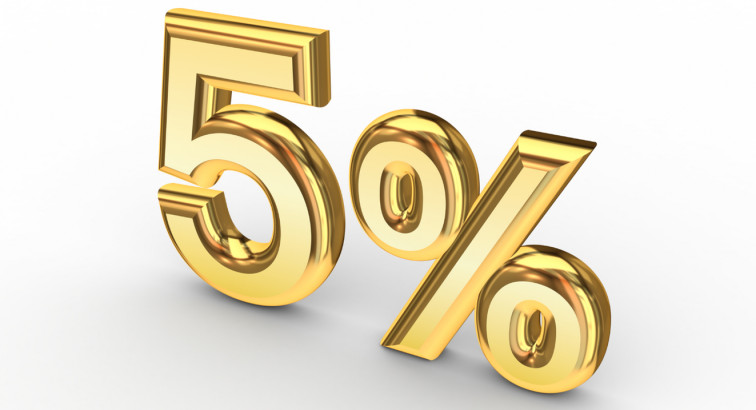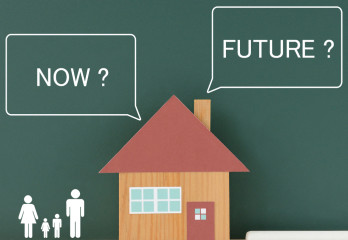As we enter the new year, there is a growing sense of optimism among investors and consumers that we may be nearing the conclusion of a prolonged period of volatility for interest rates and financial markets. While it would be premature to declare 2025 free of economic turbulence, the Federal Reserve appears poised to adopt a more measured approach to interest rate adjustments. This shift could bring a welcome sense of stability to broader markets. But the question on many homebuyers' minds is: will interest rates hit 5% again, a level that has historically defined the balance between affordability and market activity? While the prospect seems appealing, recent shifts in the Fed's strategy suggest a more nuanced outcome, shaped by the economic fundamentals driving today's markets.
The Federal Reserve’s Approach
The December 2024 Federal Reserve meeting offered critical insights into the central bank’s outlook for the coming year. Chair Jerome Powell announced a planned reduction of rates with only two cuts anticipated in 2025—a less aggressive stance compared to what many had initially expected. This signals a deliberate and measured approach aimed at maintaining economic stability amid complex and competing pressures.
The Fed’s cautious tone reflects a balancing act between controlling inflation and supporting growth. Despite cooling price increases, inflation remains above the Fed’s 2% target. The labor market, meanwhile, continues to display resilience with strong employment figures and wage growth. Together, these factors reduce the urgency for rapid rate reductions while keeping the economy on a steady course.
Economic Fundamentals Shaping the Rate Environment
Understanding the Fed’s decisions requires a closer look at the underlying economic fundamentals:
Inflation Dynamics: Inflation has moderated significantly since its peak in 2022, but core inflation metrics remain stubbornly elevated. Sticky components such as housing costs and services inflation continue to drive the Fed’s cautious stance, as abrupt rate cuts could risk reigniting price pressures.
Labor Market Strength: The U.S. labor market remains a key pillar of economic stability. Unemployment rates are historically low, and wage growth, though slower than earlier in the recovery, continues to support consumer spending. These factors suggest that the economy is less reliant on aggressive monetary easing.
Global Economic Conditions: International economic uncertainty—from geopolitical tensions to divergent central bank policies—adds complexity to the Fed’s decision-making. Maintaining a measured pace allows the U.S. economy to remain adaptive to external shocks.
Financial Market Adjustments: Markets have already priced in expectations of lower rates, leading to rallies in equities and bonds. This indicates optimism about economic conditions but also highlights the importance of the Fed’s credibility in managing expectations.
What Does This Mean for Interest Rates?
With only two rate cuts expected, the likelihood of interest rates hitting 5% in 2025 appears slim. Current projections suggest rates could settle in the mid-to-high 5% range by year’s end. While this may fall short of initial hopes, it still represents a meaningful decline from current levels, offering relief to borrowers and signaling ongoing progress in the Fed’s monetary strategy.
Implications for Broader Markets
Rather than focusing solely on home affordability, the implications of these rate adjustments extend across sectors:
Corporate Borrowing and Investment: Lower rates could ease borrowing costs for businesses, encouraging investment in capital projects and innovation. This is particularly relevant for sectors like technology and infrastructure.
Consumer Spending and Credit: While not at historic lows, mid-to-high 5% rates could provide a boost to consumer confidence and spending. Reduced credit costs may also alleviate financial pressures for households managing debt.
Asset Valuations: Equities and real estate markets are sensitive to rate changes. A gradual decline in rates could stabilize valuations, reducing volatility while fostering sustainable growth across asset classes.
The Bigger Picture
The Federal Reserve’s recent announcements underscore its commitment to long-term economic stability. By signaling a slower pace of rate cuts, the central bank is reinforcing its intention to navigate inflationary risks and maintain credibility in the eyes of global markets.
For homebuyers, the outlook is increasingly favorable. Interest rates, though still higher than the historic lows of 2020-2021, have come down significantly from their peaks of over 8% just 1.5 years ago. While rates may not reach 5% in 2025, they are steadily declining, making borrowing more affordable. However, home prices are unlikely to decrease. In fact,
they are expected to continue a slow, steady rise due to limited housing inventory and sustained demand.
If you're considering buying a home, waiting for rates to hit an arbitrary target may not be the best strategy. The right time to buy is when it aligns with your financial and personal circumstances. Delaying a purchase in hopes of lower rates could mean paying a higher price for the same home. For example, a $400,000 home today might cost around $412,000 a year from now if the housing market appreciates by even 3%, which is on the neutral to low side of projections. This potential increase in price could outweigh any savings from a slight drop in interest rates. Moreover, purchasing now and refinancing later when rates improve can often be a more cost-effective strategy in the long run.
The overall trajectory of rates and home prices suggests a positive environment for buyers who act thoughtfully and strategically. Staying informed and making decisions based on personal needs, rather than market timing, remains the key to navigating this dynamic landscape.
Written By
Sam Wurm, Executive Vice President of Nebraska Realty and Embarc Realty



